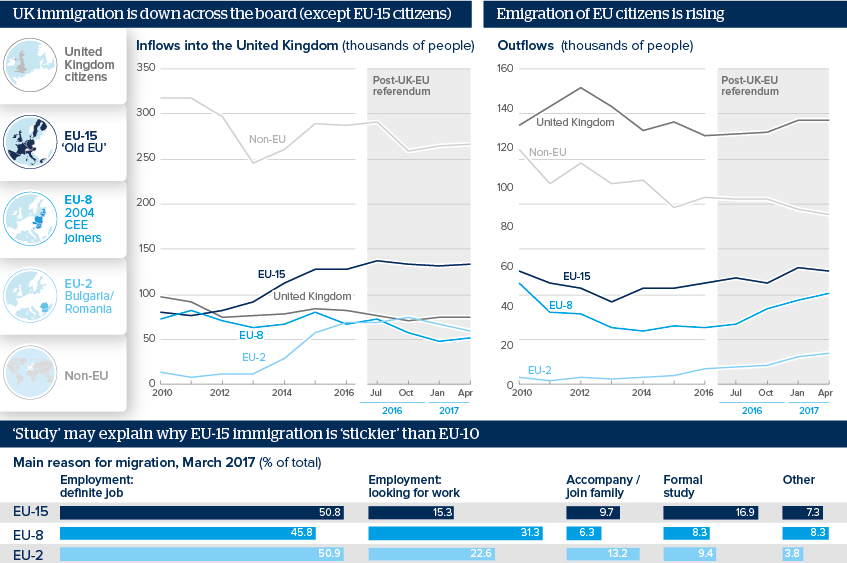More Eastern EU migrants may leave as Brexit nears
Turnaround in Eastern EU migration appears due to declining UK attractiveness, as a workplace and as somewhere to live
Source: Office for National Statistics, Migration Statistics Quarterly Report, August 2017
Outlook
The latest net migration data (with caveats -- provisional and not wholly statistically significant) appear to show the United Kingdom becoming less attractive for all except EU-15 citizens since the Brexit referendum. That the non-EU segment bucks the trend for falling immigration suggests that the changed UK/EU relationship is involved. The EU-15 exception may be connected with more coming for education, compared to EU-10 migrants; it easier to abandon jobs than courses.
Lower EU immigration and higher emigration have mostly accelerated between June 2016 and March 2017, suggesting a rising trend. People may have waited post-Brexit. Fewer EU citizens will probably stay in the United Kingdom, as 2019 approaches and as home economies revive.
Impacts
- UK soft power may diminish internationally because of perceptions since the Brexit referendum of widespread xenophobia.
- Reduced EU-10 migrant labour will particularly affect the UK economy’s retail, hospitality, care home and agricultural sectors.
- The rising UK population, a concern for some, will abate but not reverse because of continuing non-EU net migration.
- Weaker sterling and the slowing UK economy may also play a part in discouraging immigration.
See also
- Macroprudential policy may slow Baltic price rises - Oct 10, 2017
- EU-UK free movement compromise will need flexibility - Sep 8, 2017
- Leaked UK immigration proposals will raise uncertainty - Sep 6, 2017
- Lack of consensus clouds EU-UK transition prospects - Aug 11, 2017
- More graphic analysis
